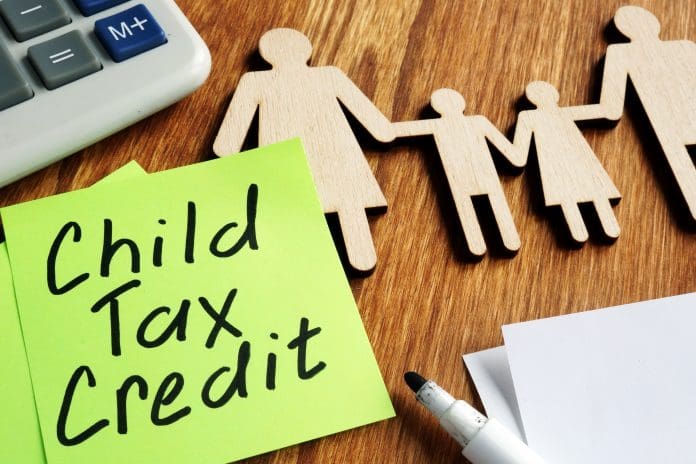One of the most successful of the COVID-19 era federal support payments, during and after the pandemic, ended after just one year. The expanded version of the Child Tax Credit stimulus check was hugely successful but despite President Biden’s effort to continue with it through 2025, it came to an abrupt end.
The CTC stimulus check is a taxation credit for parents with dependent children. since its inception as part of the Taxpayer Relief Act of 1997. The initial $50 per child for children up to the age of sixteen grew to $2,000 before it was briefly expanded under the Rescue Plan to between $3,000 and $3,600 depending on the age of the child.
The signing of the American Rescue Plan Act paved the way for the introduction of the expanded Child Tax Credit stimulus check. for the first time, the CTC payments were given out as an advance. Earlier it was given out as a rebate on income tax and was only payable in the year of filing.
But under the Rescue Plan, the stimulus check went out as an advance. The payment would have been set off against the income tax return for 2021 filed in the first quarter of 2022. Instead, it was partially given out as an advance in the same year (2021) between July and December as a monthly stimulus check between $250 and $300, comprising 50% of the total amount payable.
The balance amount was set off against the income tax returns filed by beneficiaries in the first quarter of 2022. But after the 2021 CTC stimulus check, the IRS reverted to its pre-pandemic version for parents in need.
In 2023 we will see it continue at the same level that was offered before the expansion of the credit passed through the Rescue Plan.
The Child Tax Credit Stimulus Check In 2023
The amount of the CTC payments in 2023 is smaller and the eligibility is also restricted when compared to the 2021 version. This is due to the rules established under the Tax Cuts and Jobs Act (TCJA) of 2017. Such changes will be in effect through the fiscal year 2025 if Congress does not step in and modify the Child Tax Credit before then.
The Rescue Plan brought major changes in 2021 to the Child Tax Credit and helped millions of low and moderate-income families with children. it allowed such families to receive half of the value of the credit amount over 6 months in advance rather than as a bulk sum or refund against taxes. the remaining half of the child tax credit amount will be then claimed when filing the income tax return. This increased the total number of returns processed by the IRS.
But the expanded version of the Child Tax Credit has lasted just one year. like for 2022, taxpayers with eligible children will claim a credit worth only up to $2,000 per child instead of the $3,000 to $3,600 given out in the 2021 tax year under the American Rescue Plan Act.
Like for 2022, filers with eligible children can claim the credit of up to $2,000 per child per year. this year the credit has been made partially refundable and there is also a threshold on earning to claim the $1,400 maximum that is known as the Additional Child Tax Credit.
Taxpayers who owe less in taxes than their refundable amount will have it added to the tax refund. The non-refundable portion will reduce the income tax owed by the same amount.
President Biden has kept up his demand with Congress that they should fully restore the CHld Tax Credit. it gives tens of millions of parents much-needed moving space and brought down child poverty by 50%.
Eligibility For The 2022 Child Tax Credit Stimulus Check
The Child Tax Credit stimulus check will go out to parents with dependents under seventeen as of the last day of 2022 and who need a few other eligibility parameters. Under the enhanced credit, children up to seventeen were eligible for the maximum amount of the much larger version of the 2021 child tax credit.
For the tax year 2022 to 2025, the child must be eligible to be claimed as a dependent on the taxpayer’s return and live at the same residence as the filer for over half the year. The child also cannot provide over 50% of their financial support during the tax year.
The child must also have a valid taxpayer identification number, which is the Social Security number. Before the expanded version of 2021 and also the TCJA, filers could claim children with ITIN (individual taxpayer identification number) issued by the IRS and not the Social Security Administration. This indicated that documented immigrants and permanent residents were also able to claim the credit.
Eligibility For The 2022 Child Tax Credit
To qualify for the child tax credit stimulus check, parents should have an adjusted gross income (AGI) below $200,000 for individual filers and double that amount for married couples filing jointly. They are eligible for the refundable part of the credit. The claimable amount is a part of the earning above that threshold. To arrive at the amount that will ultimately be claimed, filers have to subtract $2,500 from the earned income. Social Security benefits and unemployment compensation are not part of earned income and multiply that figure by 15%.
The IRS majorly administers and enforces the US federal tax laws. The Internal Revenue Service diligently deposits the Child Tax Credit installments every month into the citizens’ accounts. Citizens desirous of filling out the application for the Child Tax Credit can visit the official portal.
The age limit as stipulated under the child tax credit laws is that children must be less than 17 years old at the end of the tax year. The specific target of the CTC payments is to bring down child poverty by sending in more money to families getting credit. Additionally, it also provides credit payments to fresh applications each year.
Various online facilities include checking enrollment. Applicants can check their qualification status for this particular facility on this site. The CTC payments were mandated by the Rescue Plan and are not considered income by the federal authorities. Hence, it will not have any impact on the beneficiaries of Medicaid, Public Housing, and unemployment insurance.






